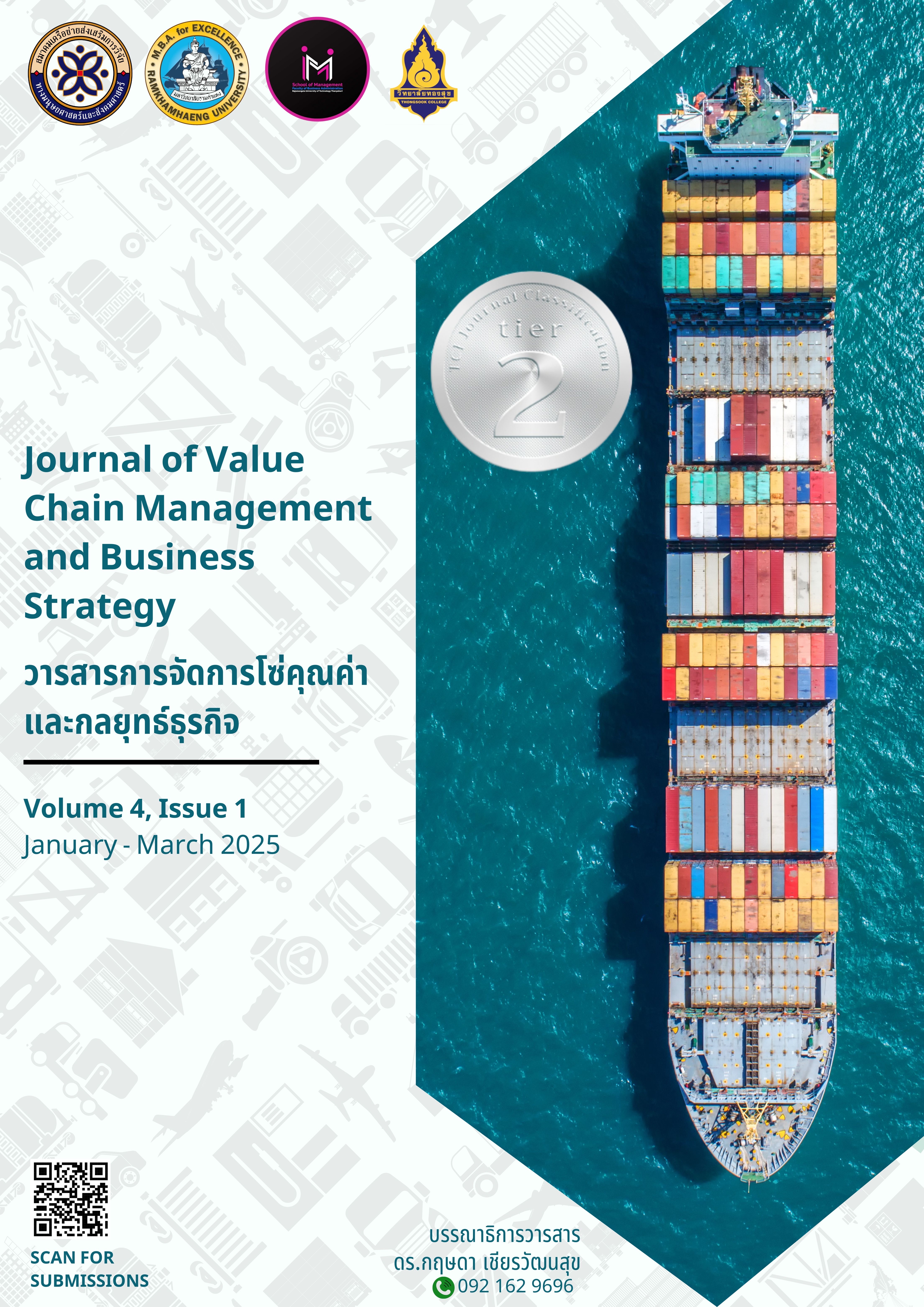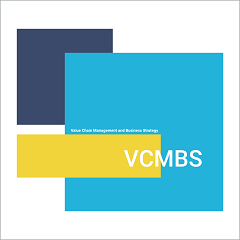อิทธิพลของแรงจูงใจในงาน ความสมดุลระหว่างชีวิตและงาน และความพึงพอใจในงานที่มีต่อความผูกพันต่อองค์การของพนักงานที่มีอาชีพเสริม
คำสำคัญ:
แรงจูงใจในงาน , ความสมดุลระหว่างชีวิตและงาน , ความพึงพอใจในงาน , ความผูกพันต่อองค์การ , อาชีพเสริมบทคัดย่อ
การวิจัยครั้งนี้มีวัตถุประสงค์เพื่อ 1) ศึกษาอิทธิพลของแรงจูงใจในงาน ความสมดุลระหวางชีวิตและงาน และความพึงพอใจในงานที่มีต่อความผูกพันต่อองค์การของพนักงานที่มีอาชีพเสริม ซึ่งทำงานในบริษัทเอกชนในกรุงเทพมหานครและปริมณฑล และ 2) เพื่อเสนอแนวทางการบริหารทรัพยากรบุคคลที่ช่วยส่งเสริมความผูกพันต่อองค์การของพนักงานที่มีอาชีพเสริม การวิจัยเรื่องนี้เป็นการวิจัยเชิงปริมาณ ใช้วิธีการสำรวจโดยใช้แบบสอบถามเป็นเครื่องมือในการเก็บข้อมูล กลุ่มตัวอย่าง คือ พนักงานบริษัทเอกชนที่มีอาชีพเสริมและทำงานภายในองค์การที่ดำเนินกิจการในพื้นที่กรุงเทพมหานครและปริมณฑล จำนวน 385 คน สถิติเชิงพรรณนาที่ใช้ในการวิเคราะห์ข้อมูลเชิงปริมาณ ได้แก่ ค่าความถี่ ค่าร้อยละ ค่าเฉลี่ยและค่าส่วนเบี่ยงเบนมาตรฐาน สถิติเชิงอนุมานที่ใช้ในการทดสอบสมมติฐาน คือ ค่าสัมประสิทธิ์สหสัมพันธ์แบบเพียร์สัน และการวิเคราะห์ในรูปแบบของโมเดลสมการโครงสร้างแบบกำลังสองน้อยที่สุดบางส่วน (PLS-SEM)
ผลการวิจัย พบว่า แรงจูงใจในงาน มีอิทธิพลเชิงบวกต่อความผูกพันต่อองค์การของพนักงานที่มีอาชีพเสริม นอกจากนี้ แรงจูงใจในงาน มีอิทธิพลเชิงบวกต่อความสมดุลระหว่างชีวิตและงานและความพึงพอใจในงาน ในขณะที่ความพึงพอใจในงาน และความสมดุลระหว่างชีวิตและงาน มีอิทธิพลเชิงบวกต่อความผูกพันต่อองค์การของพนักงานที่มีอาชีพเสริม อย่างมีนัยสำคัญทางสถิติที่ระดับ .001 สำหรับบทบาทของความสมดุลระหว่างชีวิตและงานในฐานะตัวแปรส่งผ่านระหว่างแรงจูงใจในงานกับความผูกพันต่อองค์การ พบว่า แรงจูงใจในงานมีอิทธิพลเชิงบวกต่อความผูกพันต่อองค์การของพนักงานที่มีอาชีพเสริม ผ่านความสมดุลระหว่างชีวิตและงาน ในขณะที่แรงจูงใจในงานมีอิทธิพลเชิงบวกต่อความผูกพันต่อองค์การของพนักงานที่มีอาชีพเสริม ผ่านความพึงพอใจในงาน อย่างมีนัยสำคัญทางสถิติที่ระดับ .001 ผลการวิจัยนี้เน้นย้ำถึงบทบาทสำคัญของแรงจูงใจในงานในการเสริมสร้างความผูกพันของพนักงานต่อองค์การ โดยเฉพาะอย่างยิ่งสำหรับพนักงานที่มีอาชีพเสริม
เอกสารอ้างอิง
เกียรติศักดิ์ แก้วมหาชัย. (2550). แรงจูงใจในการเลือกประกอบอาชีพเสริมของชาวนาในเขตตำบลเชียงหวาง อำเภอเพ็ญ จังหวัดอุดรธานี [วิทยานิพนธ์ปริญญาเอกที่ไม่มีการตีพิมพ์]. มหาวิทยาลัยศิลปากร.
พิราวรรณ กิติสากล. (2565). ปัจจัยด้านแรงจูงใจในงานความพึงพอใจในงานที่มีผลต่อความผูกพันต่อองค์กร ของพนักงาน กรณีศึกษา: พนักงานบริษัทนำเข้าและจำหน่ายเครื่องพิมพ์ [วิทยานิพนธ์ปริญญาโทที่ไม่มีการตีพิมพ์]. มหาวิทยาลัยมหิดล.
อทิตยา เล็กประทุม. (2563). แรงจูงใจในการทำงาน ความสมดุลระหว่างชีวิตและการทำงานกับความผูกพัน ต่อองค์กรของพยาบาลวิชาชีพโรงพยาบาลเอกชนแห่งหนึ่ง. วารสารสังคมศาสตร์และ มนุษยศาสตร์ มหาวิทยาลัยเกษตรศาสตร์, 46(1), 174-217.
อุทุมพร รุ่งเรือง. (2555). ความพึงพอใจในการทำงาน ที่มีผลต่อความผูกพันต่อองค์กรของพนักงานบริษัทอุตสาหกรรมแปรรูปโครงสร้างเหล็ก [วิทยานิพนธ์ปริญญาโทที่ไม่มีการตีพิมพ์]. มหาวิทยาลัยศรีนครินทรวิโรฒ.
Adame-Sanchez, C., González-Cruz, T. F., & Martínez-Fuentes, C. (2016). Do firms implement work–life balance policies to benefit their workers or themselves?. Journal of Business Research, 69(11), 5519-5523. https://doi.org/10.1016/j.jbusres.2016.04.164
Al-Madi, F. N., Assal, H., Shrafat, F., & Zeglat, D. (2017). The impact of employee motivation on organizational commitment. European Journal of Business and Management, 9(15), 134-145.
Azeem, S. M., & Akhtar, N. (2014). The influence of work life balance and job satisfaction on organizational commitment of healthcare employees. International journal of human resource studies, 4(2), 18. https://doi.org/10.5296/ijhrs.v4i2.5667
Bagozzi, R. P., & Yi, Y. (1988). On the evaluation of structural equation models. Journal of the Academy of Marketing Science, 16(1), 74-94. https://doi.org/10.1007/BF02723327
Bagozzi, R. P., & Yi, Y. (2012). Specification, evaluation, and interpretation of structural equation models. Journal of the Academy of Marketing Science, 40(1), 8-34. https://doi.org/10.1007/s11747-011-0278-x
Baron, R. M., & Kenny, D. A. (1986). The moderator–mediator variable distinction in social psychological research: Conceptual, strategic, and statistical considerations. Journal of Personality and Social Psychology, 51(6), 1173–1182. https://doi.org/10.1037/0022-3514.51.6.1173
Beauregard, T. A., & Henry, L. C. (2009). Making the link between work-life balance practices and organizational performance. Human Resource Management Review, 19(1), 9–22. https://doi.org/10.1016/j.hrmr.2008.09.001
Caza, B. B., Moss, S., & Vough, H. (2018). From synchronizing to harmonizing: The process of authenticating multiple work identities. Administrative Science Quarterly, 63(4), 703-745. https://doi.org/10.1177/0001839217733972
Cegarra-Navarro, J. G., Cegarra-Leiva, D., Sánchez-Vidal, M. E., & Wensley, A. K. P. (2015). Congenital learning, organisational performance and work-life balance culture. Knowledge Management Research & Practice, 13(1), 105–114. https://doi.org/10.1057/kmrp.2013.35
Clark, S. C. (2000). Work/family border theory: A new theory of work/family balance. Human Relations, 53(6), 747-770. https://doi.org/10.1177/0018726700536001
Cochran, W. (1953). Sampling techniques. John Wiley & Sons. Inc.
Colquitt, J. A., LePine, J. A., & Wesson, M. J. (2019). Organizational behavior: Improving performance and commitment in the workplace (6th ed.). McGraw-Hill Education.
Deery, M. (2008). Talent management, work-life balance and retention strategies. International Journal of Contemporary Hospitality Management, 20(7), 792–806. https://doi.org/10.1108/09596110810897619
Dwivedula, R., Bredillet, C., & Muller, R. (2013). Work motivation as a determinant of organisational and professional commitment in temporary organisations: Theoretical lenses and propositions. Project Management Research and Practice, 4(1), 11–29. https://doi.org/10.5130/pppm.v4i1.2610
Fornell, C., & Larcker, D. F. (1981). Structural equation models with unobservable variables and measurement error: Algebra and statistics. Journal of Marketing Research, 18(3), 382–388. https://doi.org/10.2307/3150980
Gallup. (2018). The gig economy and alternative work arrangements. https://www.gallup.com/workplace/240878/gig-economy-paper-2018.aspx
Greenberg, J., & Baron, R. A. (2008). Behavior in organizations (9th ed.). Pearson Education.
Hadi, S., Pebrianti, E., & Kirana, K. C. (2023). Analysis of the effect of work-life balance, self-esteem and work motivation on organizational commitment moderated by organizational justice on workers in Yogyakarta. Journal of Education, Teaching, and Learning, 8(1), 7–14. https://dx.doi.org/10.26737/jetl.v8i1.3313
Hair, J. F., Hult, G. T. M., Ringle, C. M., & Sarstedt, M. (2013). A Primer on Partial Least Squares Structural Equation Modeling (PLS-SEM). Sage.
Haryono, S., & Arafat, Y. (2017). Effects of organizational culture and work motivation on job performance among the private universities’ full-time faculties in South Sumatera Province. International Information Institute (Tokyo). Information, 20(8A), 5563–5575.
Henley Business School. (2018). The side hustle economy: A white paper from the Henley Business School. Henley Business School, University of Reading. https://assets.henley.ac.uk/defaultUploads/PDFs/news/Journalists-Regatta-Henley_Business_School_whitepaper_DIGITAL.pdf
Herzberg, F., Mausner, B., & Snyderman, B. B. (2011). The motivation to work (Vol. 1). Transaction publishers.
Isık, O., Ugurluoglu, Ö., Mollahaliloglu, S., Kosdak, M., & Taşkaya, S. (2016). The effect of job satisfaction and motivation of health care professionals on their organizational commitment: The case of Turkey. TAF Preventive Medicine Bulletin, 15(2), 102-108. http://doi.org/10.5455/pmb.1-1433923798
Judge, T. A., Weiss, H. M., Kammeyer-Mueller, J. D., & Hulin, C. L. (2017). Job attitudes, job satisfaction, and job affect: A century of continuity and of change. Journal of Applied Psychology, 102(3), 356–374. https://doi.org/10.1037/apl0000181
Karasek, S. (1979). job demands-control model: A summary of current issues and recommendations for future research. In New developments in theoretical and conceptual approaches to job stress (pp. 237-268). Emerald Group Publishing Limited.
Khatri, P. V., & Behl, J. (2013). Impact of work-life balance on performance of employees in the organisations. Global Journal of Business Management, 7(1), 39–47.
Kian, T. S., Yusoff, W. F. W., & Rajah, S. (2014). Job satisfaction and motivation: What are the differences among these two?. European Journal of Business and Social Sciences, 3(2), 94–102.
Kubendran, V., Nagi, M. S., & Muthukumar, S. (2013). Organisational climate’s impact on employee’s performance. Indian Journal of Economics and Development, 1(3), 76–81.
Li, Y. (2018). Effects of work-life balance on organizational commitment: A study in China’s state-owned enterprise. World Journal of Social Science Research, 5(2), 144–166. https://doi.org/10.22158/wjssr.v5n2p144
Mangkunegara, A. P., & Octorend, T. R. (2015). Effect of work discipline, work motivation and job satisfaction on employee organizational commitment in the company (Case study in PT. Dada Indonesia). Marketing, 293, 31–36. http://doi.org/10.13189/ujm.2015.030803
Mas-Machuca, M., Berbegal-Mirabent, J., & Alegre, I. (2016). Work-life balance and its relationship with organizational pride and job satisfaction. Journal of Managerial Psychology, 31(2), 586–602. https://doi.org/10.1108/JMP-09-2014-0272
Mastura, M., Lumbanraja, P., & Absah, Y. (2024, May). The influence of work-life balance and work motivation on the performance of millennial employees at Bank SUMUT Medan Sukaramai Branch Office. Journal of International Conference Proceedings, 7(1), 259–271. https://doi.org/10.32535/jicp.v7i1.3102
McKinsey Global Institute. (2016). Independent work: Choice, necessity, and the gig economy. https://www.mckinsey.com/featured-insights/employment-and-growth/independent-work-choice-necessity-and-the-gig-economy
Meyer, J. P., & Allen, N. J. (1997). Commitment in the workplace: Theory, research, and application. Sage Publications.
Mubarok, E. S. (2019). The effect of organizational culture and work motivation on employee performance: The mediating role of job satisfaction. European Journal of Business and Management, 11(35), 69–79. https://doi.org/10.7176/EJBM/11-35-09
Nunnally, J. C., & Bernstein, I. H. (1994). Psychometric theory. McGraw-Hill.
Nurlina, N., Widayatsih, T., & Lestari, N. D. (2023). The effect of job satisfaction and motivation on the organizational commitment. JMKSP (Jurnal Manajemen, Kepemimpinan, Dan Supervisi Pendidikan), 8(1), 26–39. https://doi.org/10.31851/jmksp.v8i1.10029
Ogbogu, C. O. (2017). The effects of motivation on staff job performance: Evidences from the Lagos State Ministry of Environment, Nigeria. Journal of Sustainable Development, 10(2), 183-190. https://doi.org/10.5539/jsd.v10n2p183
Oktosatrio, S. (2018). Investigating the relationship between work-life balance and motivation of the employees: Evidences from the local government of Jakarta. International Journal of Academic Research in Business and Social Sciences, 8(2), 205-221.
Peterson, R. A. (2000). A meta-analysis of variance accounted for and factor loadings in exploratory factor analysis. Marketing Letters, 11, 261–275. https://doi.org/10.1023/A:1008191211004
Popoola, S. O., & Fagbola, O. O. (2021). Work-life balance, self-esteem, work motivation, and organizational commitment of library personnel in federal universities in Southern Nigeria. International Information & Library Review, 53(3), 214–228. https://doi.org/10.1080/10572317.2020.1840244
Poyraz, K., & Kama, B. (2008). Analyzing the effects of perceived job security on job satisfaction, organizational loyalty, and intention to leave. Suleyman Demirel University Journal of Faculty of Economics and Administrative Sciences, 13(2), 143–164.
Rashmi, K., & Kataria, A. (2021). Work–life balance: A systematic literature review and bibliometric analysis. International Journal of Sociology and Social Policy, 42(11/12), 1028–1065. https://doi.org/10.1108/ijssp-06-2021-0145
Rees, D., & McBrain, R. (Eds.). (2007). People management: Challenges and opportunities. Palgrave Macmillan.
Robbins, S. P. (2003). Perilaku organisasi. Indonesian Edition. Penerbit PT. Index.
Robbins, S. P., & Judge, T. A. (2012). Organizational behavior (15th ed.). Pearson.
Sinaga, B. A., Utomo, K. W., & Rahayu, H. C. (2024). Enhancement of organizational commitment among management trainee graduates: The influence of training, career development, and work-life balance mediated by work motivation. International Journal of Science and Society, 6(3), 27–39.
Suyono, J., Eliyana, A., Ratmawati, D., & Elisabeth, D. R. (2021). Organization commitment and work environment on job satisfaction: The mediating role of work motivation. Systematic Reviews in Pharmacy, 12(02), 681–688. https://dx.doi.org/10.31838/srp.2021.2.93
Szecsenyi, J., Goetz, K., Campbell, S., Broge, B., Reuschenbach, B., & Wensing, M. (2011). Is the job satisfaction of primary care team members associated with patient satisfaction?. BMJ Quality & Safety, 20(6), 508–514. https://doi.org/10.1136/bmjqs.2009.038166
Tippins, M. J., & Sohi, R. S. (2003). IT competency and firm performance: Is organizational learning a missing link? Strategic Management Journal, 24, 745–761. https://doi.org/10.1002/smj.337
Wertheim, E. G. (2016). The importance of effective communication. Northeastern University.
Yang, Y. (2017). The relationship of organizational culture, employee motivation and job satisfaction in China’s telecommunication industry [Unpublished doctoral dissertation]. University of the Thai Chamber of Commerce.
ดาวน์โหลด
เผยแพร่แล้ว
รูปแบบการอ้างอิง
ฉบับ
ประเภทบทความ
สัญญาอนุญาต
ลิขสิทธิ์ (c) 2025 วารสารการจัดการโซ่คุณค่าและกลยุทธ์ธุรกิจ

อนุญาตภายใต้เงื่อนไข Creative Commons Attribution-NonCommercial-NoDerivatives 4.0 International License.




